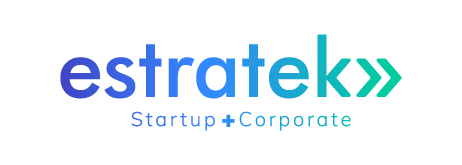[vc_row][vc_column][vc_column_text]Everybody knows that creating, validating and scaling a marketplace business model is basically a pain in the a**. Marketplaces are harder than other type of business models because everything comes in doubles, so even your “lean” canvas might end up looking like a long and intricate blueprint.
Double customer segments (buyers and sellers), double problems worth solving, double UVP’s, different customer acquisition channels, several and different pains, jobs and gains and hopefully (or you wish) a single solution for all these: Your marketplace brilliant idea.
However, designing and building marketplace business models has it’s charms. Not only because the appealing and attention brought by famous and successful marketplaces like AirBnB, Amazon and eBay because their profit margins, popularity and market share; but because in today’s economy, it’s easy to find customers whose needs can only be satisfied by other customer segment goods or services and an ambitious entrepreneur would always want to monetize from both sides of that equation. For instance, the real estate business is one in which, no matter how many intermediaries there might be, the two customer segments (landlords and tenants) are always gonna need each other to satisfy their needs.
Even in the initial stages of marketplace business designing, when going through a problem/solution fit stage, one can face challenges that might not always seem very obvious, this is what i call the “Dah” effect, as these challenges are so basic that you can only truly understand them by experiencing and embracing them. Here come 3 “dah”s that might come handy when designing a marketplace business model from scratch
DAH #1: If there’s a buyer and seller, they surely already have a traditional marketplace. ¡Find it and learn from it!
If you have already find a problem worth solving, there’s a good chance that there are several existing alternatives to solve it. When this problem involves buyers and sellers, they must be getting together and transacting somehow. Moreover, these traditional alternatives, definitely will have a lot of things to teach you regarding the musts-haves of the type of transaction that you want to go through your platform. As they have been grown organically, they tackle down at least the most basic customer needs and pains. Nevertheless, this doesn’t mean that their ways and dynamics don’t create jobs, pains and gains that new alternatives can work with.
On the other hand, when validating your model, identifying the main acquisition channel for the riskiest customer can be tricky, and doing so would be crucial for understanding how to replicate and improve the traditional marketplace alternatives. For instance, and coming back to the real estate sector, in countries like Colombia, there’s a growing direct real estate market, where house owners are preferring to rent their houses directly to tenants, avoiding intermediaries and costly monthly agent’s fares. Although this market is growing, it is difficult to find the right channel to acquire and attract those direct house owners, as they are very diverse demographically, there’s not a specific or physical space where they gather and their practices are somewhat informal and sometimes even ilegal. In this case, it might be that these types of market transactions are so very deep in the culture that extend customer personas construction and customer interviews are the key to help you construct the best and most attractive Unique Value Preposition – UVP -.
DAH #2: Your UVP’s might be attracting unmatchable customer segments. Deal with it and pivot!
Well done! it looks like you have understood both customer’s sides and according to their own pains, jobs and gains you have designed an appealing UVP for each. However, this is hardly ever enough and regardless the long listings of buyers and sellers your UVP might be attracting, your model is not tractionable or getting enough throughput unless those customers’ demand and offer match and a transaction actually occurs. Bummer, isn’t it? When the offer don’t match the demand, there are some things that might help:
- Reviewing your acquisition channels, you might be communicating your UVP to the wrong audience in the wrong place
- Reviewing your copies and communication skills, saying it right is as important as the message itself
- Don’t be afraid of PIVOT! Is that UVP the one your target customer consider as a pain reliever and a gain maker? maybe it’s time for bring it down a notch and better listen to your customer.
DAH #3: “Divide and conquer” and “low hanging mangos” first.
Is your startup really ready for a marketplace business model? When your solution is not good enough for satisfying both customers sides, then there’s no shame in considering going multisided or even direct. In other words, when your UVP is attracting only one side of the equation and you have several early adopters eager for your service, it’s a smart decision to try your best to serve them, learn from those first badges and then grow your business model from there. Grab the low hanging mangos first and later build a better informed marketplace, even if that means to divide your canvas and focus on a single customer segment first. An extra tip, Customer Acquisition Cost is a very important metric to focus on at this early stage.
All these “Dah’s” or apparently obvious situations can be faced by any marketplace business models at their early stages. In my personal experience, avoiding talking about the obvious is not always a good strategy, so why would it be a good one in business? hopefully these reflections bring open conversations regarding your marketplaces, business designs and validation plans and spare you the feeling of being told “well, dah.! isn’t that obvious?”.[/vc_column_text][/vc_column][/vc_row]




